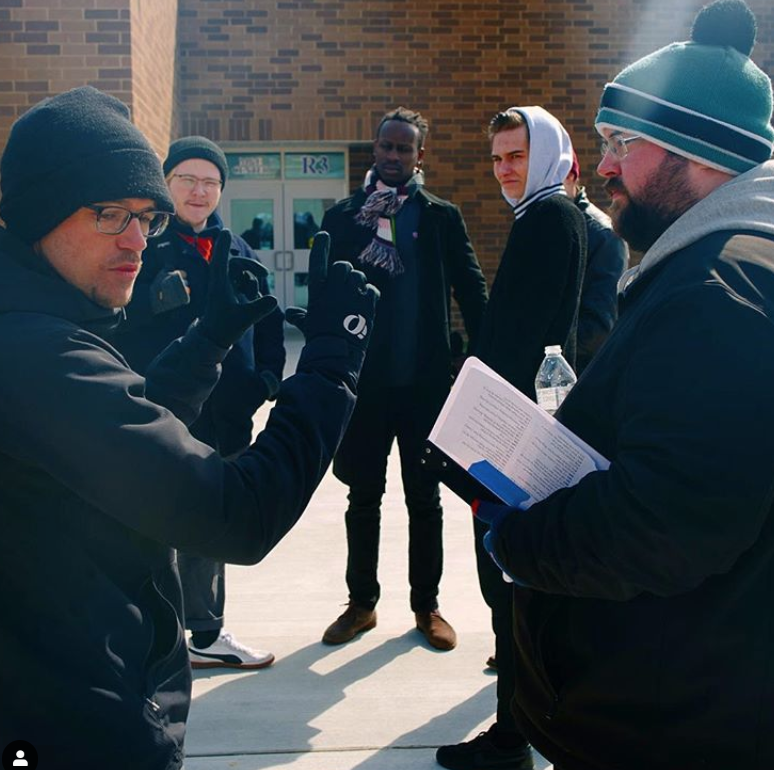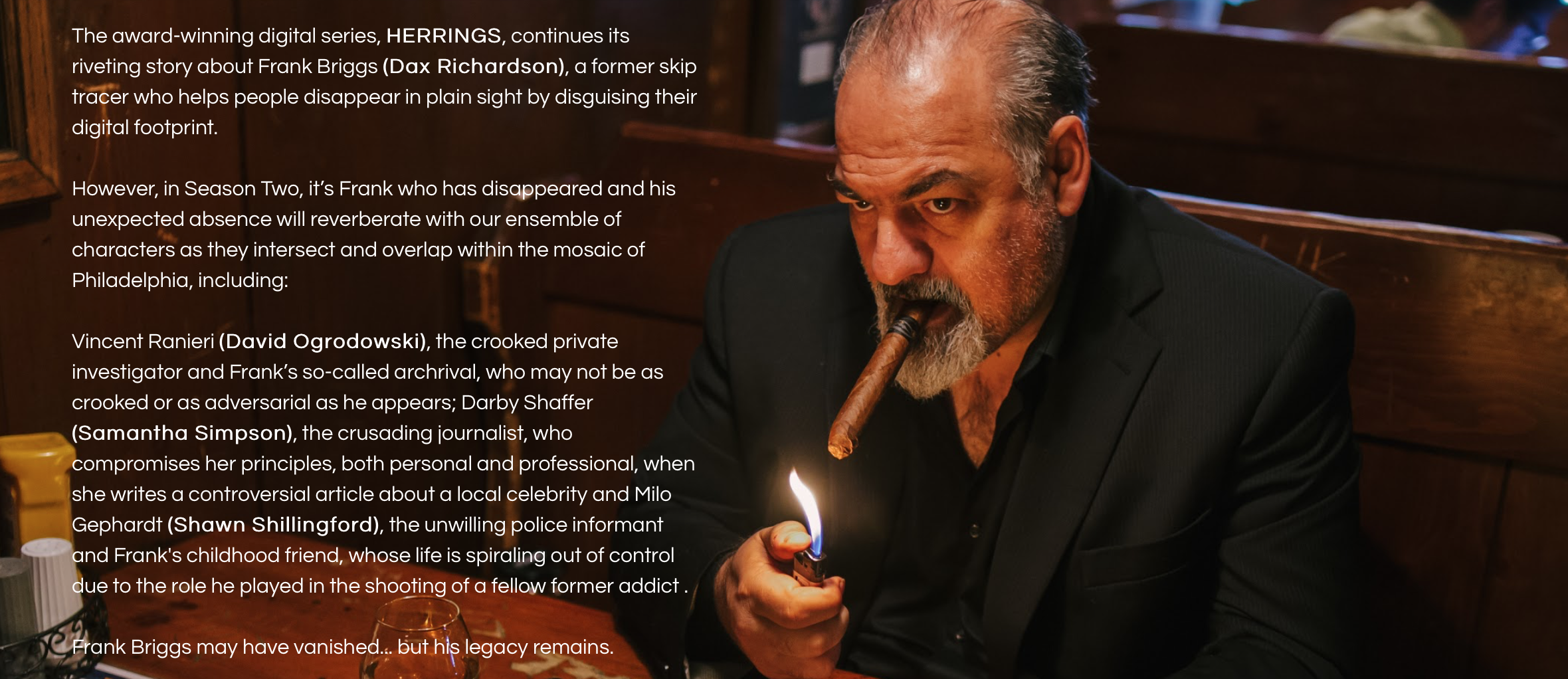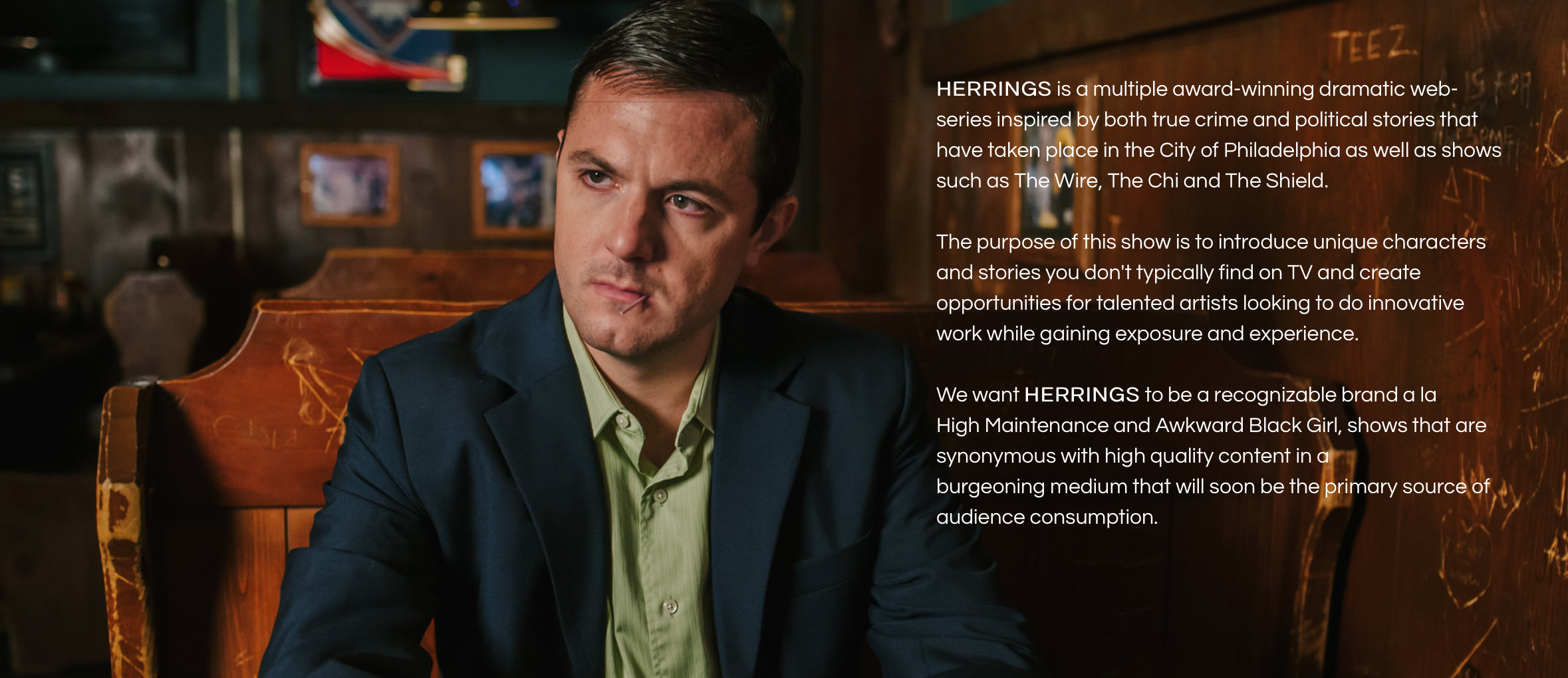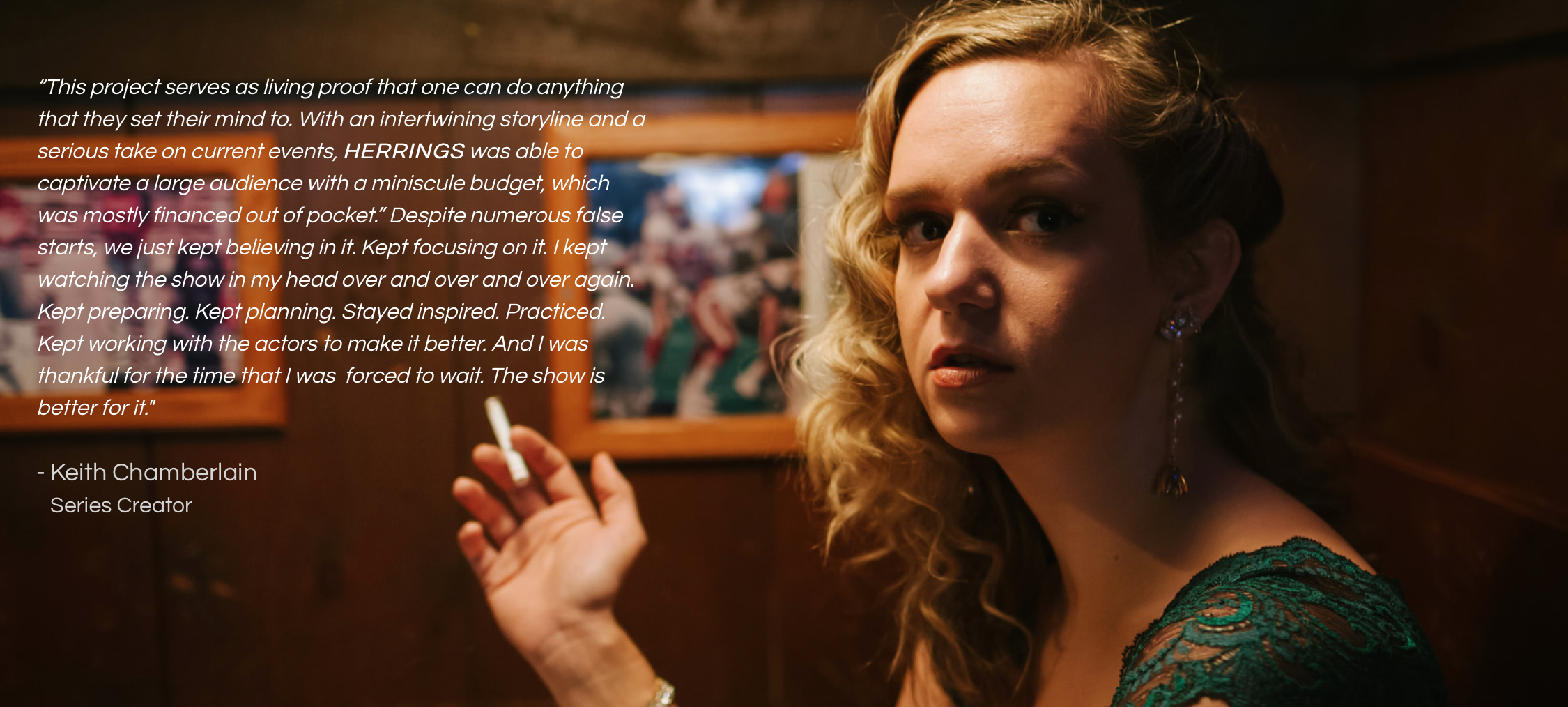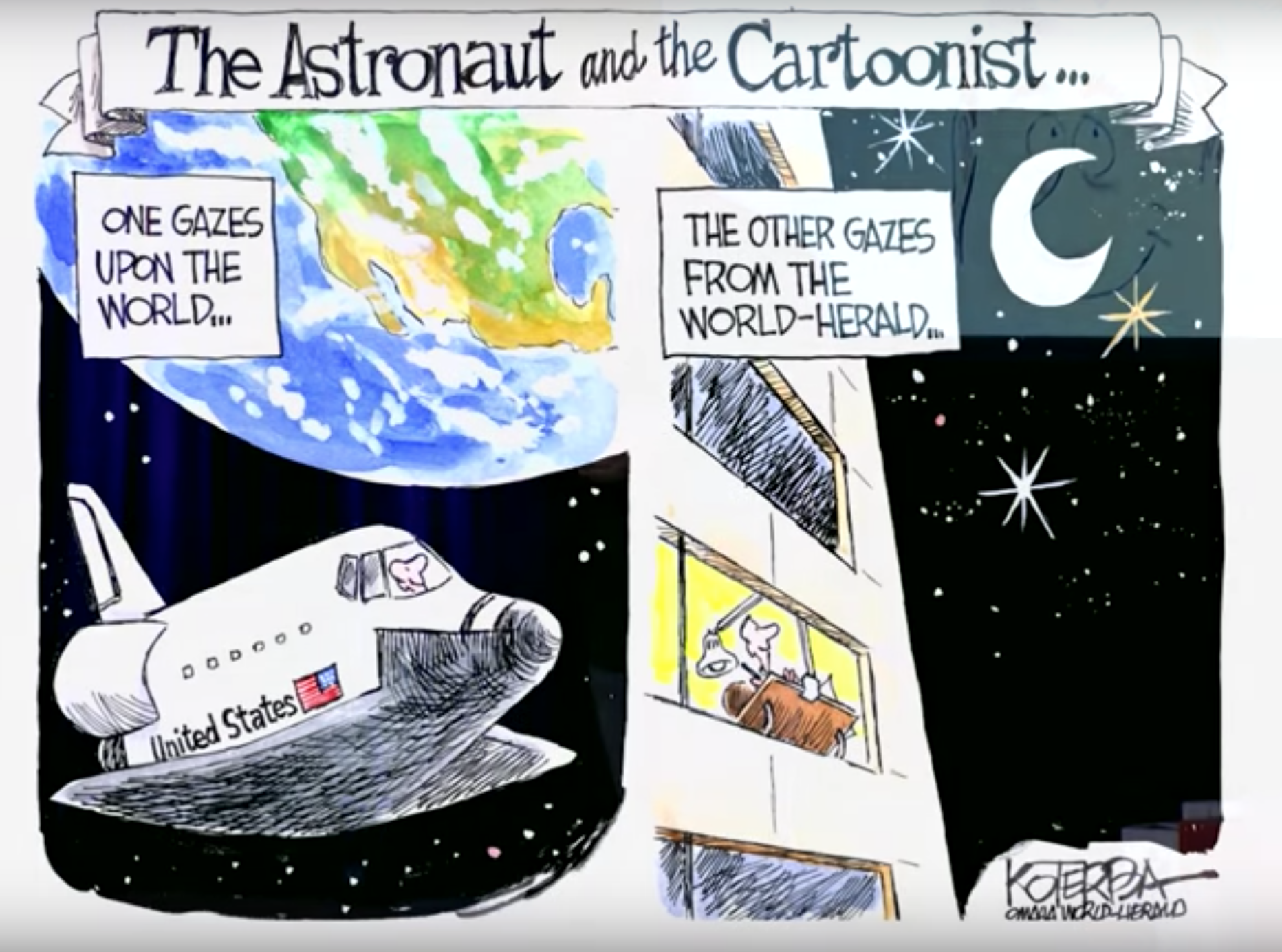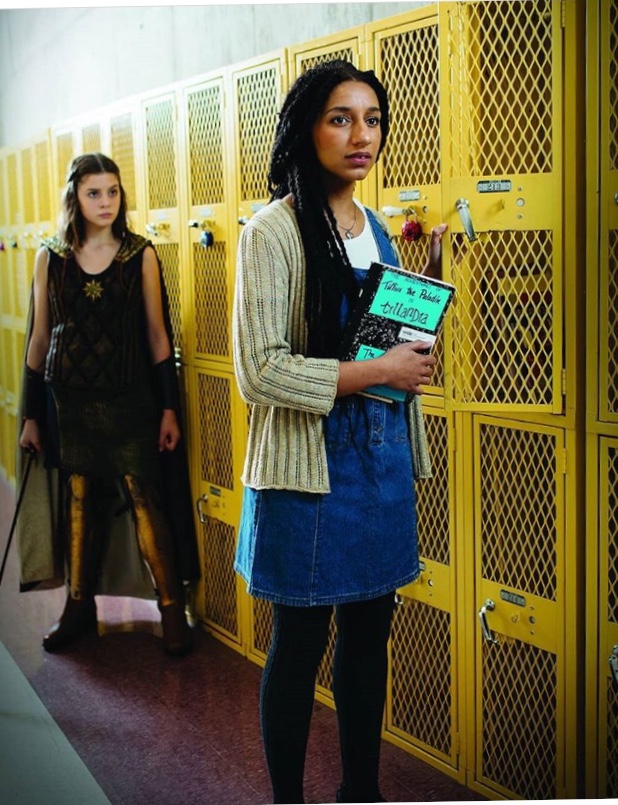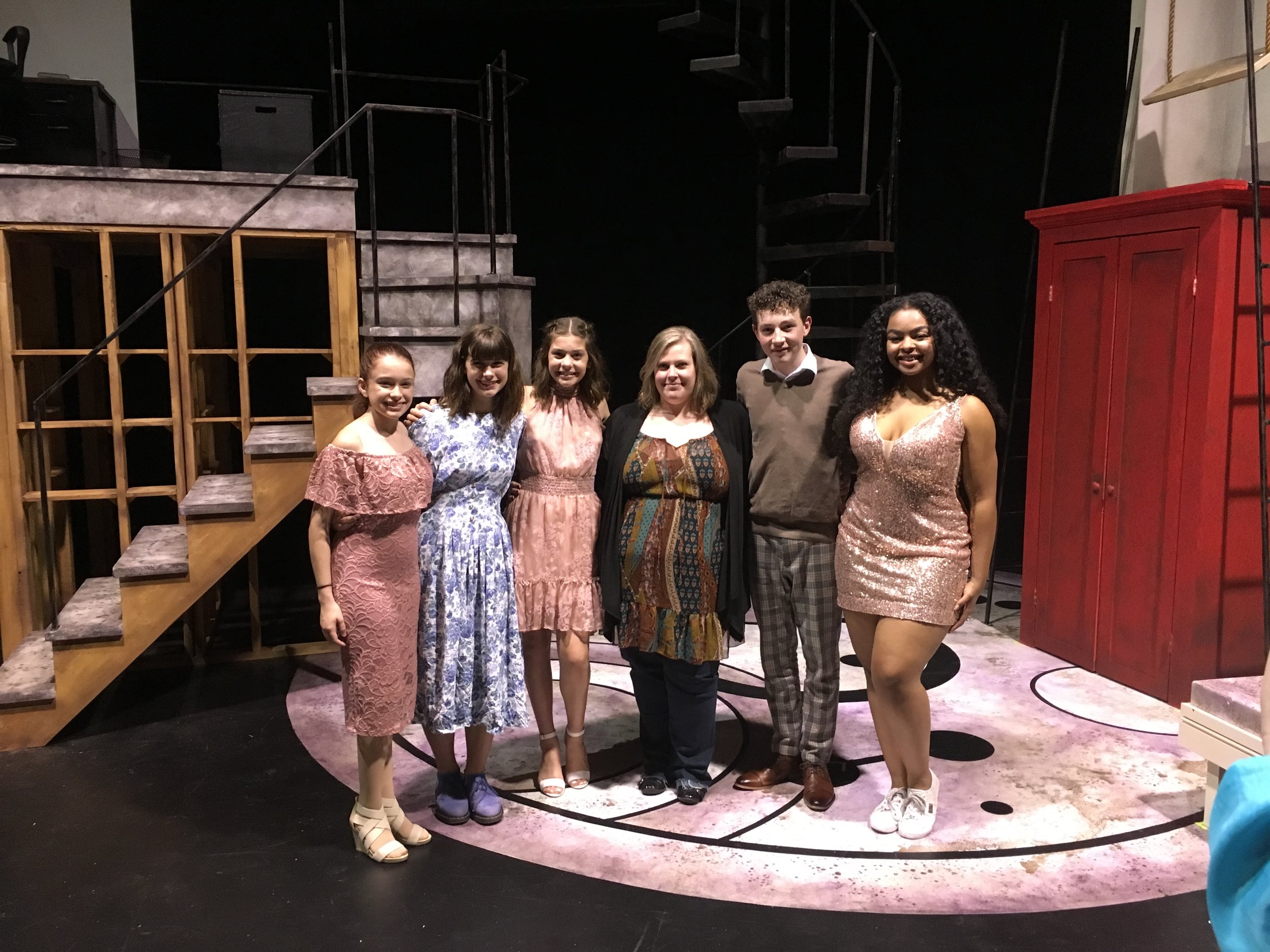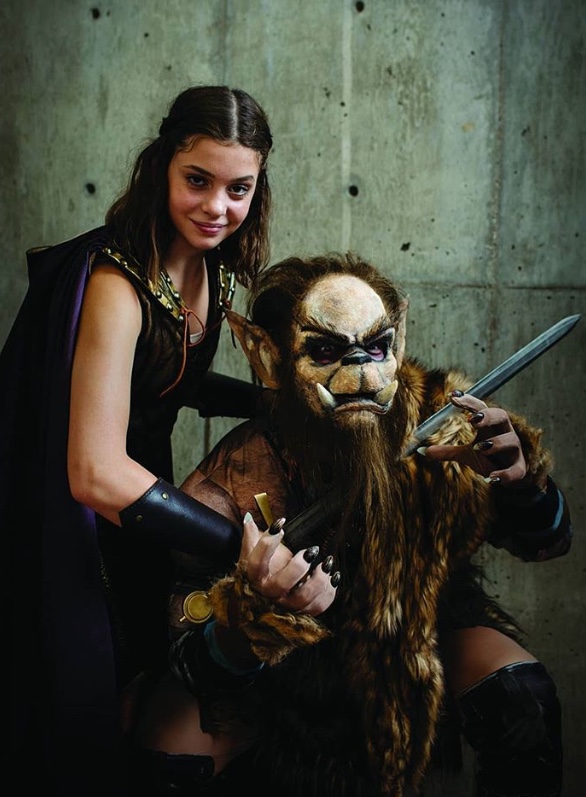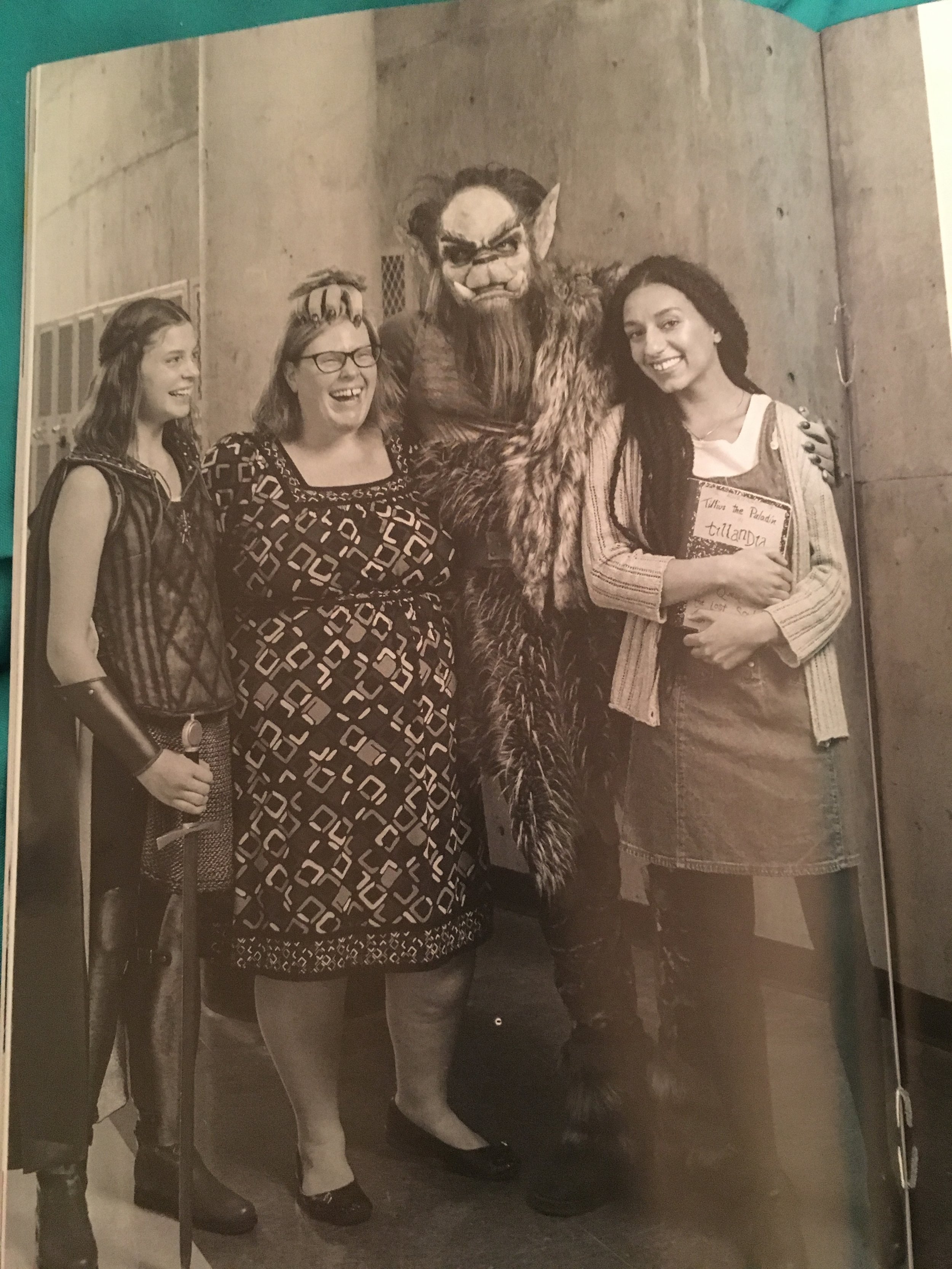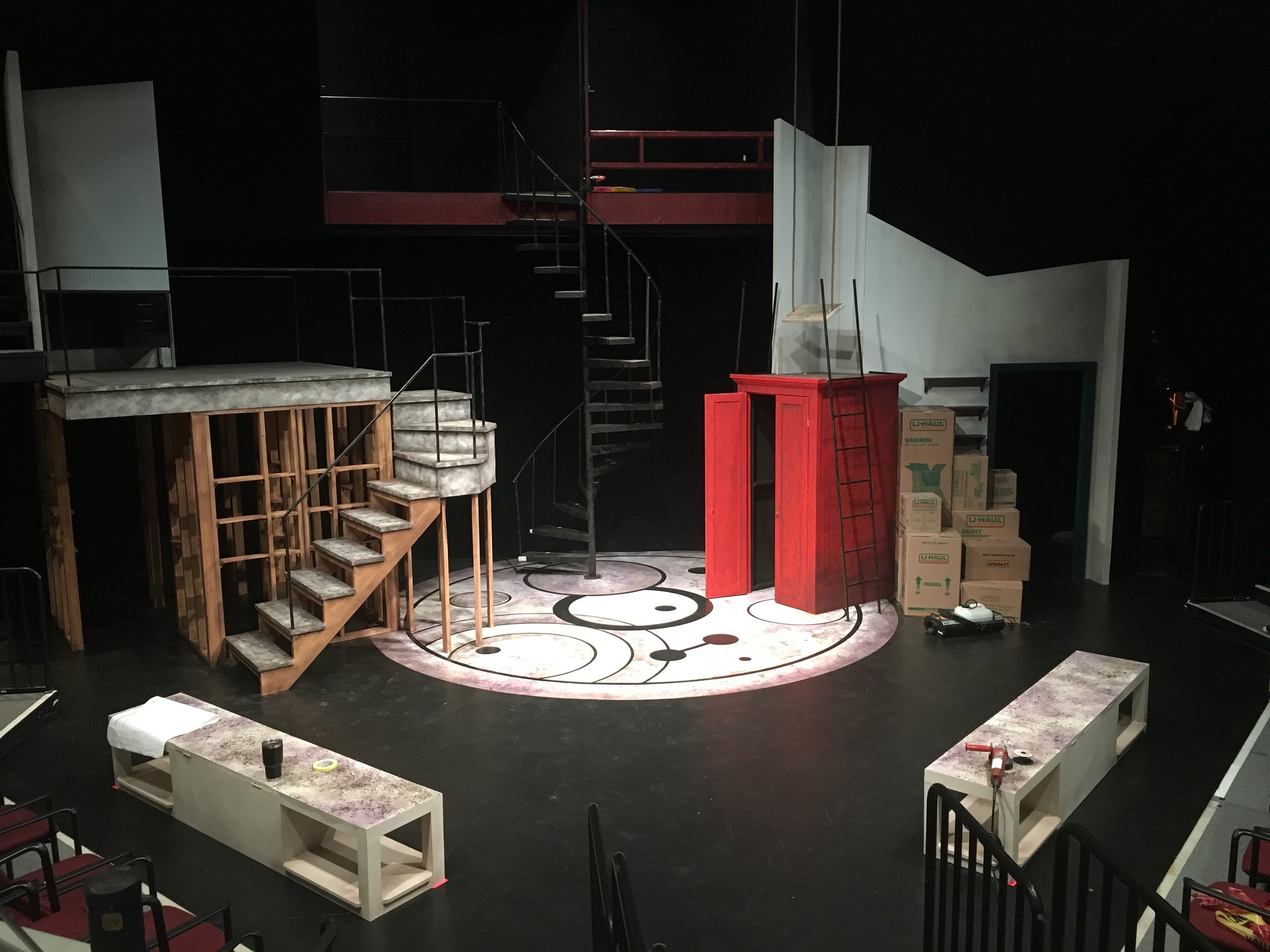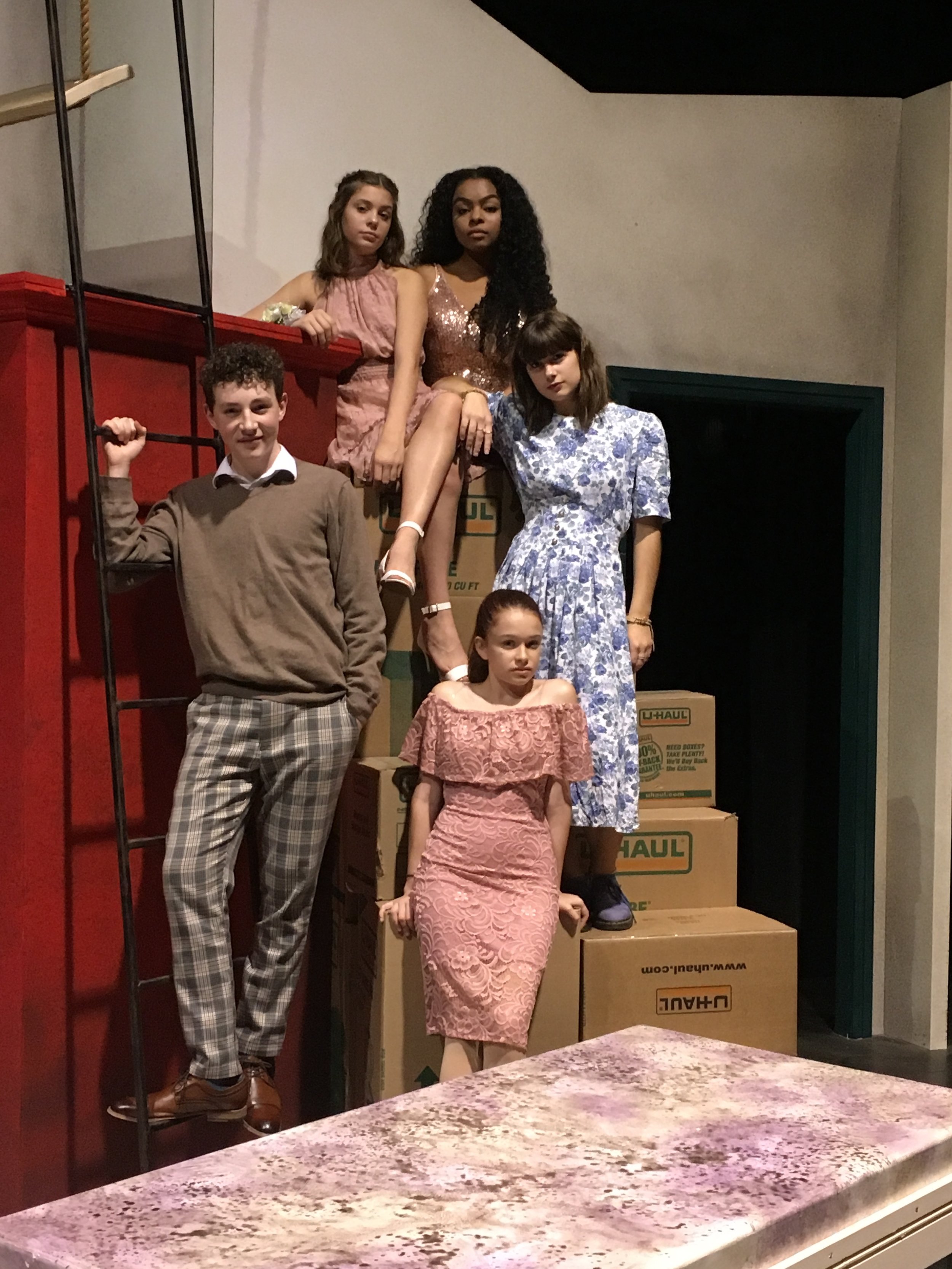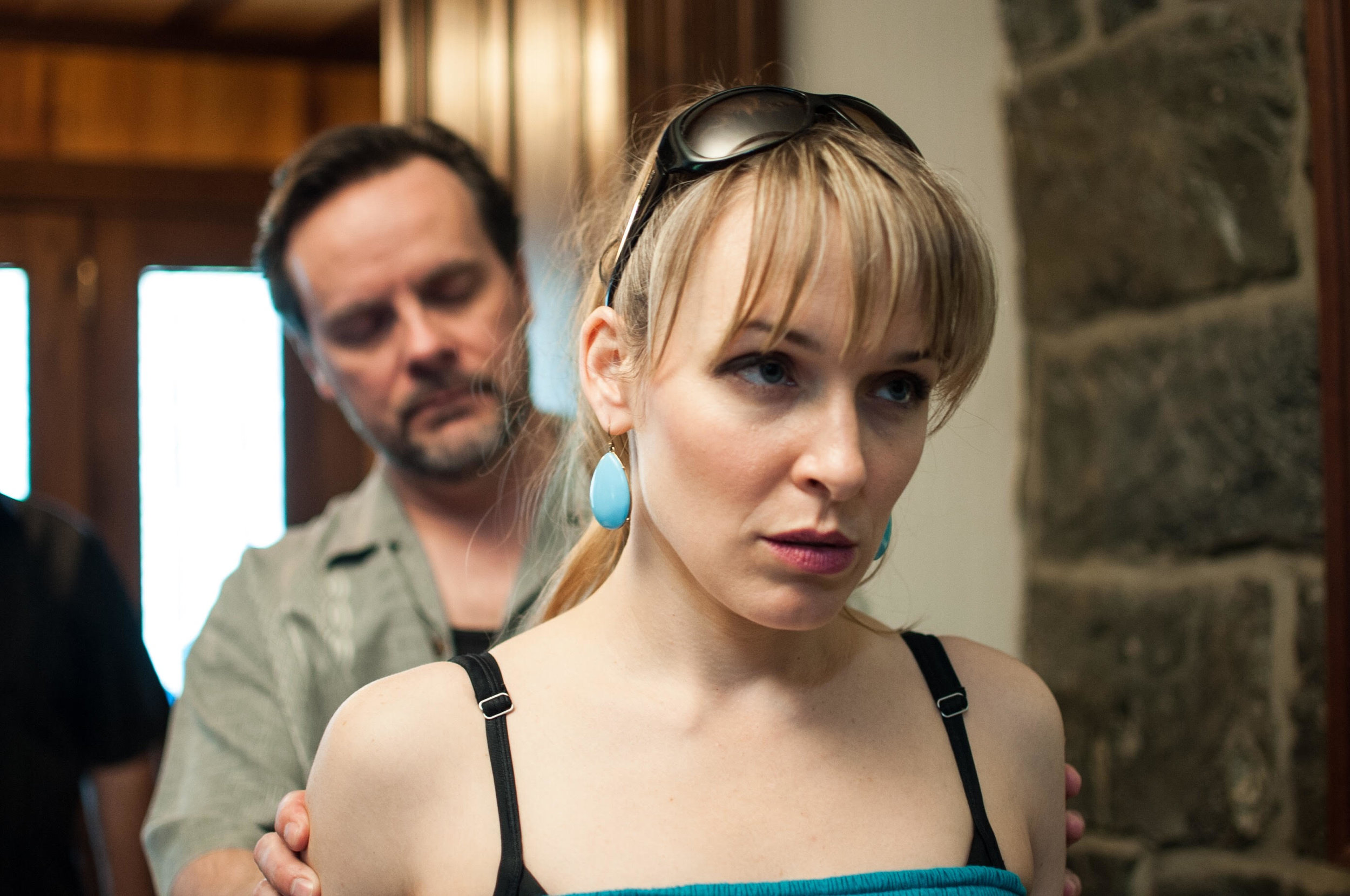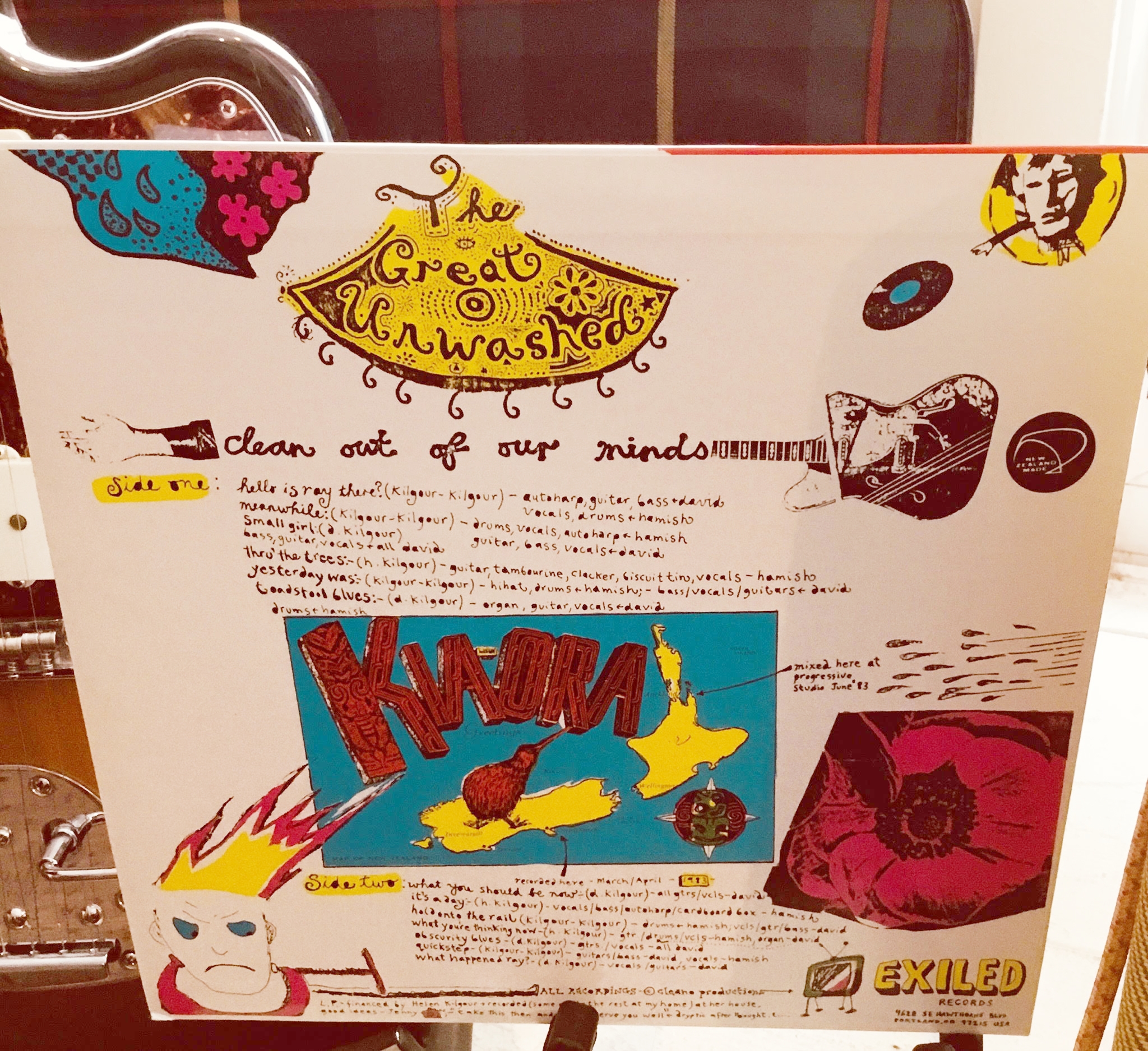Let's talk sustainability. A hot topic that has been growing more and more of interest throughout the rumblings of the universe.
DIBS was able to reach out to Stephanie from Conscious Food Project in Meadville, Pennsylvania and Dr. Karen Eisenhart an Academic Advisor and Associate Professor of the Geosciences Department at Edinboro University, whom live a fairly sustainable lifestyle and touch the surface of sustainability, what it means and even go a little deeper into the subject.
Please introduce yourself and talk about what it is exactly that you do.
STEPHANIE: My name is Stephanie Thauer, I am a mom first and foremost. I take that job very seriously, I strive to raise a consciously evolved human who understands their connection to everything they touch, and ingest. I think it's important to raise an aware person. I am also the owner/producer of Conscious Food Project @Raintree Farms. Conscious Food Project was created with the idea of being more sustainable from the inside out, from the food we eat to how we walk this earth and our connection to it.
Conscious Food Project helps people retake control of the food they consume and how we as a whole use and produce waste. I offer nutrient dense food mixes and reusable eco-friendly products that help people reduce their plastic output. I also teach basic wellness classes and classes on how to live more waste-free. I am an earth advocate, food advocate, and striver of self-balance and accordance with all around me. On the farm/home front, we recently added solar panels and are now producing our own energy, which is very exciting for us. We also have a bit of a blueberry patch (140 bushes) and a bunch of bees. Every year we work to plant trees on land that was used for mass agg for many years. We grow and store food, and plant lots of assorted trees. We also participate in our local farmer’s markets with what we produce.
KAREN: I am Karen Eisenhart a College Professor and Enviornmentalist. I teach courses on topics of Earth Sciences, Conservation of Natural Resources, and Environmental Issues. I try to practice what I teach. I practice conservation in my house, in my yard and garden, in the way that I live, shop, and consume. I have been thinking about the environment for more than thirty years.
What does it mean to live a sustainable life? What does it mean to you? What does it mean to a community?
STEPHANIE: To ultimately leave an as little footprint as possible. To live cohesive with nature, keeping balance not throwing it out of whack. Being in control of how and what we eat, grow, how we live, produce, consume and our impact and awareness of how we are all connected. Only use what you need and give back as much as we can.
For the community, I would love to see small shops or farms in every local town, where people grew/raised/produced all goods locally and shopped/created relationships for those goods. Working together towards a common goal of not having to go outside of ourselves while living harmoniously with nature.
KAREN: I read somewhere (but can’t recall the source) that to be “sustainable” is not enough. We truly need to be “regenerative” in the sense that we allow natural systems to recover and generate more abundance than we take from the system.
I am not sure that the world can become sustainable without major changes to long-entrenched systems of economics, governments, industry, development, and so on. I fear that we would need a change in everything…truly a revolution. Many powerful people have a lot to lose if we change the existing systems, and therefore they resist change.
For a community, I think if a community really embraces sustainability it can bring quite a lot of benefit. Supporting the local environment connects people to their place and to their neighbors. It can start to make you see things in a different way than you did before. Greater care for the local environment and for one’s neighbors encourages people to support their neighbors and their local businesses and food producers, which can greatly benefit the local economy and keep more dollars circulating in the local region. However, it comes at some costs, too. People must be willing sometimes to pay a bit (or sometimes a lot) more for a product or service produced locally because small businesses do not enjoy same tax breaks and subsidies as large businesses and corporations, and do not have the ‘economies of scale’ that allows things that are mass-produced to be cheaper. Another cost is convenience. The things that benefit the community or your family may sometimes take longer, and more planning. “Care” for those around you can be ‘inconvenient’ in terms of time and effort. For example, think of the time it takes to make a meal from scratch as opposed to buying ready-made or from a restaurant.
Greater care and involvement in the local environment may cause people to be more involved in local government, too, which can increase civic connection and activity in local government. This is a very good thing and should appeal to people of different political views. When people with different views come together for a common cause they meet each other and learn to be more tolerant of one another. They are often willing to consider things from another viewpoint and find ways to compromise and work toward a larger, shared vision. This allows us to move away from caricatures and stereotypes of other groups and to see them for who they are and to try to understand their legitimate concerns and how we can work together to seek solutions that benefit everyone.
Why is it important to gear more towards a sustainable life?
STEPHANIE: Because as a society we consume too much. There is a great imbalance in what we take, consume, and the waste we create to what nature is able to cope with. We as a society are not being accountable for the mess we have created. If every person focused on not eating out of a package the effects on every level would be huge.
KAREN: There are so many reasons! I think that it is the ethical thing to do. Humans share the planet with so many other species…or rather we SHOULD share the planet. In reality, we (humans) tend to take everything for ourselves without thinking about the consequences.
One of the heartbreaking things about caring so much for the natural world is to see resources depleted or degraded for things that don’t really bring much emotional or other benefits to people. Every day the mail carrier brings me junk mail, which goes straight from the mailbox to the shredder. The government subsidizes this junk mail by offering cheap postal rates, which subsidize the whole postal system. If Americans want a government-supported postal system it has to be subsidized in some way, yet when I think of all the raw materials, energy resources, and so on that go into making the paper and materials used to prepare the advertisements and the energy and effort to sort it and deliver it to every house and every PO Box, I can’t but think how wasteful that is of natural resources. This is only one example out of millions of daily examples of wasted resources. Another example is all of the raw materials and energy that go into packaging. It is very hard to purchase anything in America without also purchasing the packaging.
Over the decades, all of this waste has been snuck into society and Americans have been conditioned to accept it without question. Unless someone says to specifically think about all the packaging waste, most people never even consider it. And more and more of it is made from plastics, with the effect that plastics are ending up everywhere and impacting food webs in all kinds of marine and aquatic ecosystems. It is so sad that the bulk of plastic waste comes from single-use items that are sometimes not even used once before they enter the waste stream. It ultimately is coming back to impact and harm us. It harms many of the beings that share our planet.
Once you start to recognize these things and take it upon yourself to examine your life and to gradually seek ways to reduce your personal waste stream you become increasingly more aware of your connection to the natural world and the impact of society upon it. You may seek out hobbies and maybe even livelihoods that are more supportive of the environment and your community, which can bring more personal satisfaction to you that can lead to a more peaceful existence. People thrive when they do things that they enjoy, that exercise their creativity and intellect. Thus, a more sustainable life may encourage greater physical health through a better diet and more physical activity, but it can also bring about greater emotional health and spirituality (defined very broadly), which may also support a person’s total health and well-being. Working with your family and your neighbors to facilitate and maintain community sustainability (re)connects us to other people and builds social networks that appear to support the mental and emotional health of individuals. And shopping in your local community, especially buying products and services made/completed by local people supports the local economy, which brings greater financial stability to your local economy, which can bring more revenue to your local government, and so on.
Thus, when the majority of people in a community are striving toward sustainable living it can bring about better health and welfare for individuals and families, local governments, local-to-regional economies, and regional-to-global environments. I mention regional-to-global environments because when you try to source more of the things you eat and need regionally you reduce the demand on materials from other places, theoretically concentrating your ecological footprint. Making less waste, and also depending on products that can be readily assimilated by the Earth (i.e., organic fertilizers and pest control methods in food and fiber production) improves the environment. To the extent food and other materials can be produced locally supports the local economy, also improving the local tax base so that the community can develop local solutions to turn biodegradable waste into a resource. For example, a community can turn yard and kitchen wastes into household or community compost that can be returned to the soil to support more productivity and biodiversity, build soils, sequester carbon, reduce stormwater runoff, create spaces for children and families to recreate and prosper, and so on. For a community to do these things reconnects them to the natural cycles, and demonstrates to children how natural cycles work and emphasizes the value of natural systems and cycles.
What are the different aspects of sustainability?
STEPHANIE: Growing food, storing food, conserving energy, environmental, livelihood.
KAREN: Commonly used definition of sustainability comes from UN Conventions, and typically discuss environmental sustainability, economic sustainability, and social and economic justice.
There is a lot of emphasis on what an individual can do, but rectifying the largest impacts on the environment will likely involve government policy changes. Major sectors of the economy produce a lot of impact. Some of these sectors are out of control of the individual: agriculture; transportation; industry; energy generation.
But it's still important for individuals to do what they can and start where they are. Examining one’s personal impact and making lifestyle changes brings increasingly greater awareness of what is going outside of one’s household. Small actions that don’t make a big difference in the community can start to make a “newbie” aware of their behaviors. When you change something small, sometimes you start to see more things you could change with little effort.
Consumers have great power when they decide to collectively exercise different behaviors. Look at the campaign to get rid of plastic straws and the impact it is having on large franchises such as Starbucks. In America, we definitely can ‘vote with our dollars’. When we get the attention of big business we also get the attention of big government.
Another quote I have heard that I really like (but do not know the original source) is “when you change the way that you look at things, the things that you look at change.” Changing the way we look at things is a very important aspect of sustainability. We need to examine and question our values. Do our actions and lifestyles support what we think is most valuable?
Besides sustainability being about ecological balance and conservation, what else does it mean?
STEPHANIE: Self-sufficient, self-reliant, not relying on a system that really doesn't care about each other.
KAREN: I don’t think sustainability is about balance. I think its more about resilience. How do we behave and use resources to allow natural systems the continued capacity for regeneration?
‘Balance of nature’ is an older idea. It's useful, but incorrect. It comes from a time when scientists believed there was stability to nature. In reality, the disturbance is a very important part of nature. All natural systems have evolved over time to be resilient to certain kinds of disturbances that occurred within a range of sizes and severities. For example, in the eastern USA, forests periodically experience hurricane damage. Southern coastal forests experience greater severity more frequently, whereas inland and more northerly forests experience high severity hurricane disturbance less frequently. Yet, following these disturbances forest were able to recover. The recovered forest may not have looked exactly as the disturbed one did, but the ecosystem was resilient in the sense that the biological material was there to re-establish a similar type of ecosystem that would provide similar types of habitats for a similar biological community of birds, mammals, insects, microorganisms, fungi, and so on. This led to patches that were newly recovering, older patches, and very old age patches. But sooner all later disturbance would impact a patch and “reset” recovery to time zero.
One of the major impacts of humans on ecosystems is that we have tended to greatly simplify them. We have caused a decline in biodiversity, with fewer kinds of species, fewer numbers of individuals in each remaining population and therefore lower genetic diversity, fewer types of habitat, and so on. This simplification has made many ecosystems more fragile and susceptible to catastrophes that are outside of the historical range of variability for size and severity. The ultimate simplification is the vast fields of monoculture we see in conventional agricultural systems (which is a man-made type of ecosystem).
Monoculture means only one species and variety of plant; think corn field or soybean field. To grow a high yield of a single crop in this way vastly reduces the biodiversity in this highly simplified ecosystem, which invites insect pests that like this particular crop. To keep the pests from destroying the crop, conventional farmers use synthetic chemicals that also can kill non-target species. Destroying non-target insects that maybe would feed some kinds of birds will eliminate those birds from the system because they won’t nest where they can’t find food. In this sense, I guess you could say that the system has been greatly “unbalanced” because it is held in this artificial state through chemicals and fossil fuels. Over time, the ecosystem will become less productive, requiring more artificial inputs to support the desired yield.
Do you think there are enough awareness and information on sustainability? Do you think it's talked about enough through the media, in a community? I know that there are some people that are aware of it and parts of the world that practice sustainability. Where do you think the lack of sustainable awareness is?
STEPHANIE: No, there is never enough information. I think people’s scope can be very limited when viewing sustainability. It’s in everything we touch.
KAREN: I do not think there is enough awareness. I think there is a lot of “eye rolling” among people who think it’s a fad when it is brought up by someone interested in a more sustainable society. I think many in the media who are left to present it to the masses don’t understand it. They present it in small ways and sound bites that diminishes the importance of it. They like to present it in sensational ways that make supporters look ridiculous. Look at what they do to Alexandria Ocasio-Cortez. She has put forth bold suggestions. It may be that some of what she proposes is not possible (or maybe not desired), but instead of saying that some of this is good and right and some of this won’t work, they denigrate the whole suggestion and then they denigrate her by saying she is too young and naïve and doesn’t understand things or know what she is talking about. Outrage sells newspapers, I guess. So instead of having a productive national dialogue about the actual merits of suggestions for protecting against and adapting to human-caused climate change impacts, we get a media circus.
I think that the Western world doesn’t have the right value system to shift enough in the appropriate direction. Money and building wealth at the expense of the environment and even of other groups of people is given a lot of emphases. If you ask someone what it means to be successful, most people would probably answer in material terms.
What are some ways to teach sustainability in schools?
STEPHANIE: Teach children to grow, cook, and store their own foods, how to shop locally (farmer's markets), sustain the local economy, manage consumer output completely.
KAREN: I wish it were possible to teach these values through direct experience. You can capture someone’s imagination in a classroom, but if you really want their hearts and minds you have to take them out into nature. They need to put their hands in the soil, turn over rocks, grow things.
I guess one thing would be for the school itself to practice sustainability: sustainable landscaping and gardens where students grow food and other things; how they purchase supplies; energy efficient buildings; running their school bus fleet on biodiesel; etc. These things would complement a curriculum that integrated sustainability. But it would also be expensive and we are in a period of time right now in America where some powerful groups of people do not feel it is a natural priority to support education; some of these groups have a narrow of idea of what should be taught in schools, and would probably consider everything I mentioned in this paragraph to be a waste of resources. That’s because they think that education should pay for itself and spending money on these things is not economically efficient.
Maybe we need a revolution in the educational system.What are kids learning?Are these important things?Is the current system effective in educating kids in the areas that are important for them to be successful
Does being successfully sustainable depend on where you live geographically?
STEPHANIE: Not necessarily, it depends on the person/family and how they prioritize their "needs". It takes time to cultivate food but the cost is minimal.
KAREN: I think geography can make a difference. Climate is probably one of the most important physical geography factors that impact opportunities for sustainability. In the southern US, you can get by without winter heat, depending on your type of dwelling and how it was constructed. You definitely need winter heat where I live!
The society that you live in and the government can also make an impact. Some countries make it easier to live more softly on the Earth. In other countries, it is more of a challenge. It is a challenge to live sustainably in the US regardless of your income level. It’s hard to go to the store here and be able to buy anything not wrapped in plastic. It’s hard to find things that were not mass-produced using fossil fuel for energy. In the northern states, it’s hard to heat your house without fossil fuels. The alternatives don’t exist or are too expensive or too difficult for most people. Community ordinances may make it challenging to build an energy efficient house because they follow national building codes designed to be “one size fits all”. If the local government does not include elected or appointed officials with progressive interests you tend to find that they are not very open to trying out something different.
Is sustainability more so buying products that are sustainable or is it more so an individual creating their own sustainable products or is it learning to live without certain products?
STEPHANIE: I think it's a combination of all three, more so the latter two. Being sustainable takes time to do the work, to make the things you need rather than run to a store and buy it or have a shopping list that not only contains the most nutrient dense food but to take as little plastic packaging home. I do think we need to reevaluate the way we buy and consumer products. It helps to have like-minded people to work with and trade goods.
KAREN: I think it involves a lot of simplification of one’s lifestyle. It certainly requires doing more for yourself and getting away from convenience.
I had a roommate a while back who would spend a lot of money on organic food. But a lot of it came in plastic packaging and therefore generated a lot of waste. At the same time, I was trying to drastically reduce my packaging and waste. I carried cloth produce bags to the market to bring home bell peppers. She bought a 3-pack of organic bell peppers on a piece of Styrofoam wrapped in plastic cling wrap that was imported to the US from Holland. Now, what is actually organic about plastic-wrapped produce shipped from Holland? It's not like they don’t grow peppers in the U.S.! My roommate was very interested in conservation topics and environmental issues but wasn’t ready to stop trying to shop her way toward sustainability. For myself, I had to struggle with whether it was better to buy a conventionally raised pepper without packaging or an organically grown pepper picked before its peak, shipped across the ocean, and wrapped in synthetic, nonbiodegradable materials. I opted for the local pepper.
I go to a local food co-op for dry goods. I take my own jars and fill them from the bulk bins. But how did the bulk bins get full? Food that came in packaging was dumped into the bins! If you don’t grow it yourself you contribute to the pattern of waste!!
Mainly for someone in a more urban setting who doesn't have access to land, how can they live sustainably?
STEPHANIE: Urban food access is something I’ve been thinking a lot about lately. I think a great way to reach people and get them involved in creating food is community gardens. Maybe something where people can go and put in the time and that equates to shares of food. More time=more food. I think the more people get their hands into the dirt the less intimidating it is. Education has to go hand in hand with fresh food. It’s like we have to relearn to cook when moving away from packaged/processed foods. It’s a very empowering feeling when you can grow your own food. There is a shift that happens when people connect to fresh food. I personally would love to see bulk foods made more readily available in urban settings, along with the education. Bulk could equal better food quality and less packaging waste.
Also, does sustainability divide classes/races because it is not as accessible for certain cultural groups or geographic locations?
STEPHANIE: It doesn’t have to, but it probably does. I do think sustainability does change a bit depending on where you are. I do think having commercial community kitchen space in community centers available to members of the community would be an asset regardless of the location of the said community. It could facilitate a place of education, people working together to prepare food to store, give people a greater sense of well-being and purpose. It may also generate income for people.
Can living sustainably save money?
STEPHANIE: Yes, renewable energy, gardens, and fruit trees, supporting your local farmer's market, storing food, the list goes on.
KAREN: I think it can, but you have to work at it. You can buy high-quality food in its raw form. You have to prepare it, though, which makes it less convenient. When you buy more convenience products you trade your money for time. The prepared foods often cost more than the raw ingredients. You can buy produce in its harvest season when it is at its peak flavor, abundant, and often less expensive. But then you need to process it in some way to preserve it for use in other seasons. That takes time and also requires some knowledge and skills.
Certainly using less energy is more sustainable. You might have to spend a chunk of money now to be able to use less energy over the long term. For example, I saved my money and bought an expensive high-spin front-load washer. It cost nearly $1000. It has high water-use efficiency and spins at a high speed which drives the water out of the laundry. I only needed to shake out my clothes at the end of the wash cycle, put them on hangers, and hang them on a rack to air dry the rest of the way. They are dried within a day, often faster. I didn’t need to buy an electric dryer, so I didn’t have that expense and I don’t need to use electricity to run the dryer every week.
A number of times in my life I have lived without a car in small towns of America. There are some challenges to it. But if you can manage to live close enough to work that you walk or bike, and have access to food stores and other places you want to shop or hang out, then it is cheaper in the long run and also saves energy. Plus, walking is free and great for your health and for stress management. It’s easier to live without a car in an urban area that has forms of public transportation.
Do you think people are not catching on to being sustainable because it's not something convenient or accessible and requires more work?
STEPHANIE: The consumerist society is not designed so that people can have time other than consuming. Most people want things that are quick and easy, sustainability takes work, time, and dedication.
KAREN: People do want quick and easy. I think it has to do with values and learned behaviors. People growing up in today’s America have lived with convenience all their lives. We are trained from a young age to be consumers. So we are good at shopping, at buying things. The society here places a lot of value on income and wealth. Instead of having a smaller house with a smaller carbon-footprint, people want a giant house. They want every one of their kids to have their own bedroom and bathroom, and a giant kitchen, and a three-car garage. Think of the size of the garden you could plant in the excess space taken up by that giant house!!
Another aspect is peoples disconnect with nature. They may jog in the park or go skiing, but many people are not ever really IN nature. They can’t identify common plants or birds or trees. They can’t cope with flying insects. They may not know the names of their local streams or be able to identify local places where they could hike.
Do you think sustainability could solve global and local problems such as poverty, hunger, climate change, and violence?
STEPHANIE: Absolutely! If people are able to grow and cultivate their food or produce their own electricity, then why would they need to steal to get money to buy food. Not only that when you eat well you feel good, when you feel good you do good. It's a ripple effect.
KAREN: I have been looking with interest at the Green New Deal that Congresswoman Alexandria Ocasio-Cortez introduced into Congress. A green deal emphasizes social and economic equity along with environmental equity.
I have addressed this question in other parts of the interview.
In your opinion, why is it hard for individuals or society to suddenly change their habits and their lifestyles? Even after all the evidence people still have a hard time wanting to change or care to change. Why do you think that is?
STEPHANIE: People have to want to change. Nobody likes to admit that they aren't doing something to the best of their ability. When you actually commit to doing your best all the time, it is a lot of work. Also, the way things are structured makes it extremely difficult. How do you get people to consume without any kind of plastic wrapping? Because really that's what clean eating and producing minimal waste comes down to. People would have a very hard time because of the way industry is structured, it's not structured to keep people healthy, it's designed to make deep pockets full. It takes work. It's easier for people to throw away and buy new then to reuse and repurpose. I think education and communication are important. There is a certain “re-wiring” that goes along with all of this. A re-structure.
KAREN: We could radically change every aspect of society – culture and behaviors, economic systems, political systems – but there is no guarantee of sustainability. It would generate a lot of turmoil for an uncertain end. Maybe it’s because the people in power would have too much to lose. They won’t let it happen. They spend lots of money to spread disinformation and keep things as they are.
On a personal level, it can be very hard to change even if you want to. It is hard to overcome convenience. Convenience products and appliances were invented because it was hard when everything had to be done by hand. I have heard statistics about the time and physical labor it took women to do the laundry before the invention of the washing machine. You would have to set a whole day aside to do the laundry! That is very hard to do when have to work outside of your house. I don’t think many people would be willing to give up their washing machine.
A culture of work where everyone works 8+ hours per day at least 5 days of the week is not conducive to the planning and work required to do most everything for yourself. Yet you have to have an income in our society to survive.





